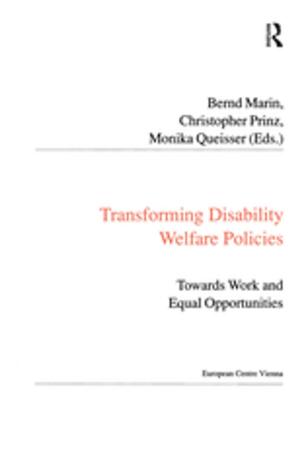Transport Disadvantage and Social Exclusion
Exclusionary Mechanisms in Transport in Urban Scotland
Business & Finance, Industries & Professions, Industries| Author: | Julian Hine, Fiona Mitchell | ISBN: | 9781351877756 |
| Publisher: | Taylor and Francis | Publication: | March 2, 2017 |
| Imprint: | Routledge | Language: | English |
| Author: | Julian Hine, Fiona Mitchell |
| ISBN: | 9781351877756 |
| Publisher: | Taylor and Francis |
| Publication: | March 2, 2017 |
| Imprint: | Routledge |
| Language: | English |
There is currently much interest in the role that transport plays in promoting, or alleviating 'social exclusion'. Exclusionary processes are, of course, multi-dimensional and a mixture of physical barriers, financial constraints, time budgets, access difficulties and psychological aspects such as fear, all combine in various ways to prevent the use of transport facilities. In order to be able to understand more accurately the relationship between transport and social exclusion, a fuller understanding is required. Data gathered from households to examine the problems experienced by women, the elderly, and disabled, and public transport users in accessing key facilities and influences on lifestyle. Interviews of policymakers and public transport providers provides insights into the problems of providing public transport to meet social inclusion objectives. This book illustrates the nature of these exclusionary processes and indicates how policy and practice could be developed to counter these effects.
There is currently much interest in the role that transport plays in promoting, or alleviating 'social exclusion'. Exclusionary processes are, of course, multi-dimensional and a mixture of physical barriers, financial constraints, time budgets, access difficulties and psychological aspects such as fear, all combine in various ways to prevent the use of transport facilities. In order to be able to understand more accurately the relationship between transport and social exclusion, a fuller understanding is required. Data gathered from households to examine the problems experienced by women, the elderly, and disabled, and public transport users in accessing key facilities and influences on lifestyle. Interviews of policymakers and public transport providers provides insights into the problems of providing public transport to meet social inclusion objectives. This book illustrates the nature of these exclusionary processes and indicates how policy and practice could be developed to counter these effects.















